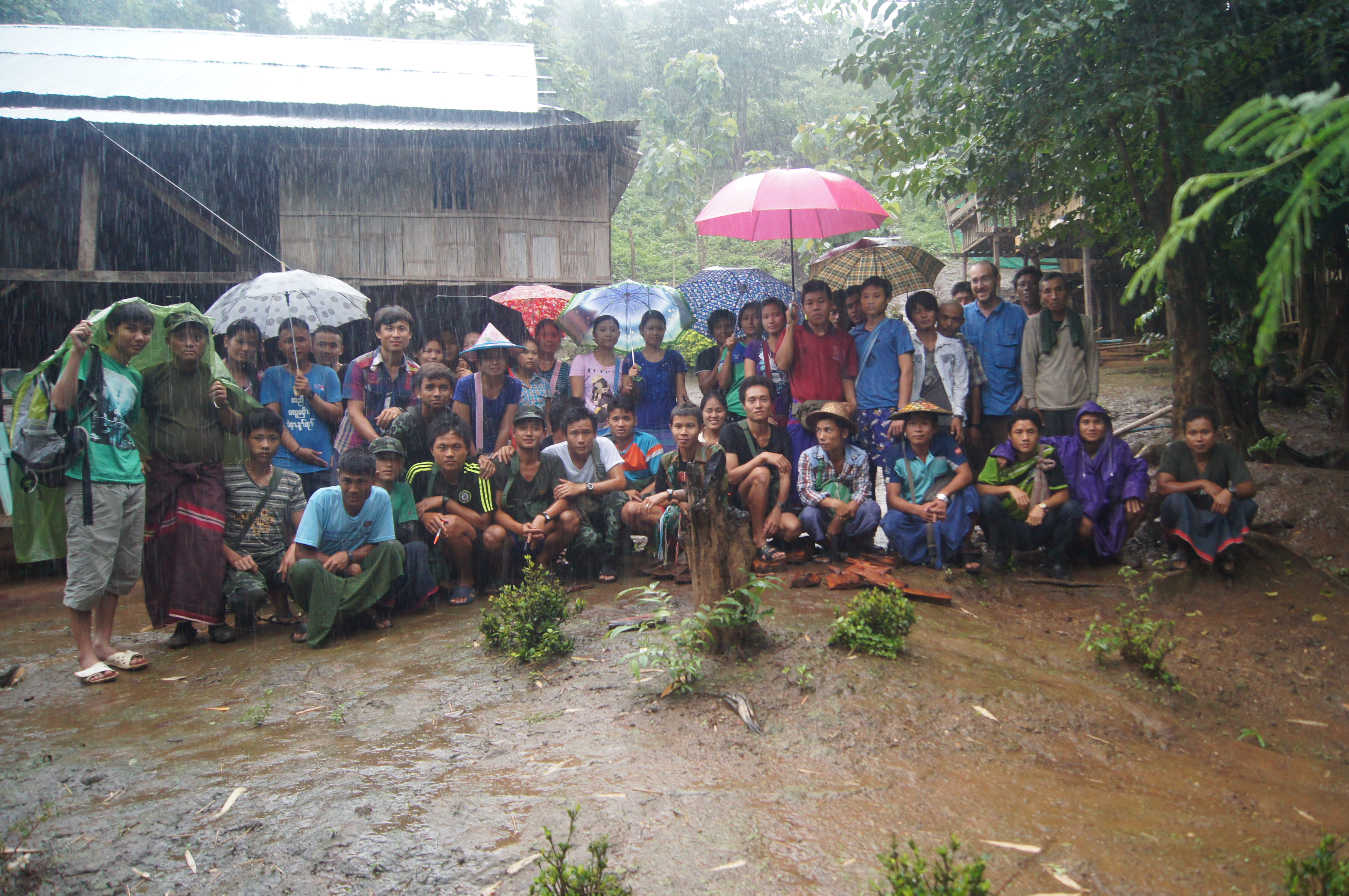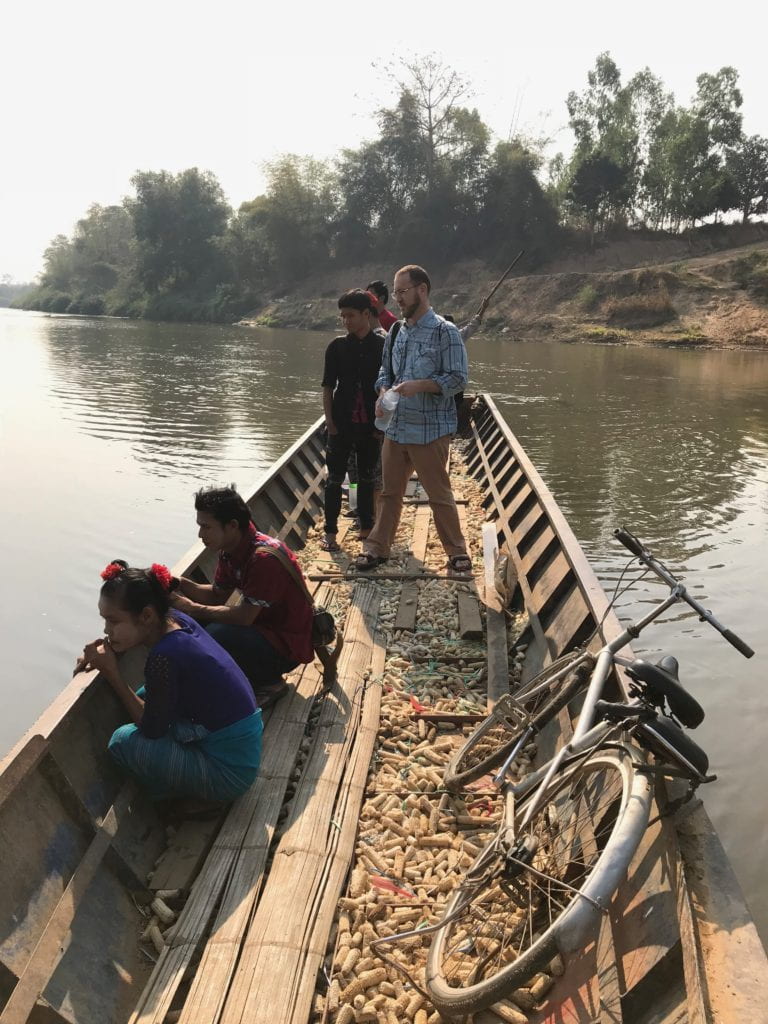On a mission to mitigate malaria
UCI epidemiologist helps eliminate the disease in global hot spots by breaking down barriers to healthcare

It’s a wonder that anyone contracts malaria. For the disease to spread, a Plasmodium parasite must invade a person’s red blood cells – infecting him or her – and achieve a specific stage of development. At this point, a certain species of mosquito has to bite that person and take blood. Then, after the mosquito has survived for several weeks and the parasite it ingested has reached a different life stage, the mosquito must bite someone else – transmitting malaria.
“It’s almost amazing that malaria happens at all because there are so many different ways the cycle could be broken – for instance, if the mosquito died a day after biting an infected person,” says Daniel Parker, an assistant professor in UCI’s Department of Population Health & Disease Prevention.
Yet, in 2017, almost half the people on this planet were at risk of the vector-borne disease, which causes fevers, headaches and chills and can be fatal if not treated promptly. Though the numbers have been decreasing, there were still about 435,000 deaths around the world in 2017 from malaria. It’s disproportionately prevalent in equatorial countries, where water and humidity abound and mosquitoes are able to thrive. For many residents of rural tropical regions, malaria is a constant threat.
But it needn’t be, because both preventive measures and effective remedies do exist. Parker, an infectious disease epidemiologist and a demographer in the field of global health, has witnessed firsthand the results of making simple treatments accessible to the most vulnerable communities. He has been working in Southeast Asia since 2011, and in the four years prior to his arrival at UCI, he lived in Thailand. There, along the Myanmar border, Parker and other scientists joined with locals to eliminate Plasmodium falciparum – which causes the most severe form of malaria – from the region (Myanmar’s Kayin State). The project was funded by the Bill & Melinda Gates Foundation, The Global Fund and the Wellcome Trust.

The area had been caught up in a civil war for over half a century, and healthcare was almost nonexistent. No census had been taken and no map of villages created since before World War II. With the help of residents, Parker charted the region with GPS units and surveys so his team could determine who already had health services.
The map was used to set up “malaria posts,” community-based clinics at which anyone exhibiting symptoms can undergo a diagnostic blood test and receive antimalarial medication. Villagers were trained so that those administering the exam and dispensing medicine would be next-door neighbors, familiar faces. They send weekly reports to the team in Thailand on the numbers of people tested and treated for malaria, which can then be immediately mapped to monitor the situation.
The team opened more than 1,200 malaria posts across 18,000 square kilometers, affecting a population of almost 350,000 people. Four years later, in an area that was once suffering from a malaria epidemic, the disease has largely disappeared.
“You can kind of split what needs to be done in global health into two camps: We need new technologies, such as diagnostics, medicine and vaccines; but the other big factor that people don’t think about so much is getting the technologies we already have – and that work – to the right people,” Parker says. “A lot of times, you don’t really need something new. Ensuring access to existing remedies doesn’t get as much attention, but it has an enormous impact. Sometimes the solution already exists; it’s just not making it to poor people in the middle of nowhere.”
He’s intent on reaching those missed by current health systems, whether it’s because they’re not on the map; because the diagnostic or treatment facilities aren’t available; or because of other sociopolitical, economic or ecological barriers.
And there are other complicating factors: In some of the communities Parker visited, almost 40 percent of the population had malaria, most without showing any symptoms. Antimalarial medications needed to be distributed to everyone. This type of public health intervention requires major community engagement efforts, and Parker currently has funding from the National Institutes of Health to study the sociocultural components of such an undertaking in Southeast Asia.
Parker, who holds bachelor’s, master’s and doctoral degrees in anthropology and demography, understands that malaria’s pervasiveness is due to more than just a lack of healthcare. Mass migrations, politics and climate change can also hamper efforts to eliminate mass diseases. The major contributors to global morbidity also change over time.

More recently, Parker has started to shift his focus to other infectious diseases in Southeast Asia, which are now of heightened importance since the malaria burden has decreased. One illness that appears to be on the rise globally, partly due to climate change, is dengue fever. Parker and colleagues began a dengue fever study in a peri-urban part of Cambodia in 2018, and while they did find a heavy incidence of the disease, they also found that many people who had the classic symptoms of dengue (high fever, muscle aches, etc.) were not infected with it and had never received a final diagnosis. This year, Parker and NIH scientists were awarded funding from the Bill & Melinda Gates Foundation to try to determine what’s really ailing these individuals – and possibly map out where they acquired it.
Another area Parker is beginning to work in is along the Ethiopian border with Sudan and South Sudan, where people are seeking refuge from war and harsh conditions. “Unfortunately, they’re coming from places with poor healthcare infrastructure, and many have diseases,” he says. “When you have lots of people coming over the border, being forced to live in high population densities and in poor conditions, you have a perfect environment for malaria and other diseases to spread.”
Large parts of Ethiopia, up until now, have been relatively safe from malaria thanks to their elevation. The capital is 7,726 feet above sea level, with conditions inhospitable to malaria-spreading mosquitoes. However, with climate change, the highlands are getting warmer, leading to a redistribution of mosquito species and putting additional sectors of the population at risk.
“My biggest concern with climate change is that it’s hard to predict exactly how it will influence global health, which requires planning ahead as much as possible,” Parker says. “Another interesting aspect of the story is that there are people migrating from highland areas to lowland areas to work on farms, and these people are not used to getting malaria, so they don’t have immunity. They can become really sick. And when they return to their home communities, they may bring malaria parasites with them.”
Since moving to UCI, he spends less time in the tropics but derives satisfaction from knowing that he’s helping a new generation enter global and public health professions. He especially enjoys mentoring students from developing nations who will apply and pass on their knowledge back home.
“I think the future of global health is in building up people who are actually from the places where we conduct research and implement public health interventions, so that the next global health researcher isn’t from the U.S. but rather some place like Laos or Myanmar,” Parker says. “To do it right, you’re actually working yourself out of a job, because you’re getting rid of malaria and training people there to do what you’re doing.”


